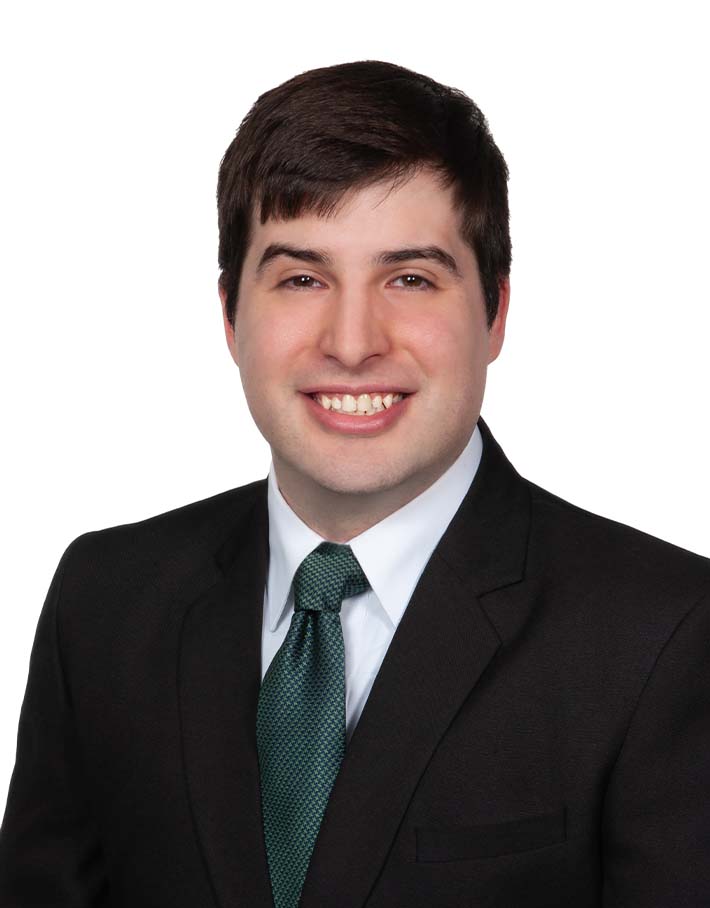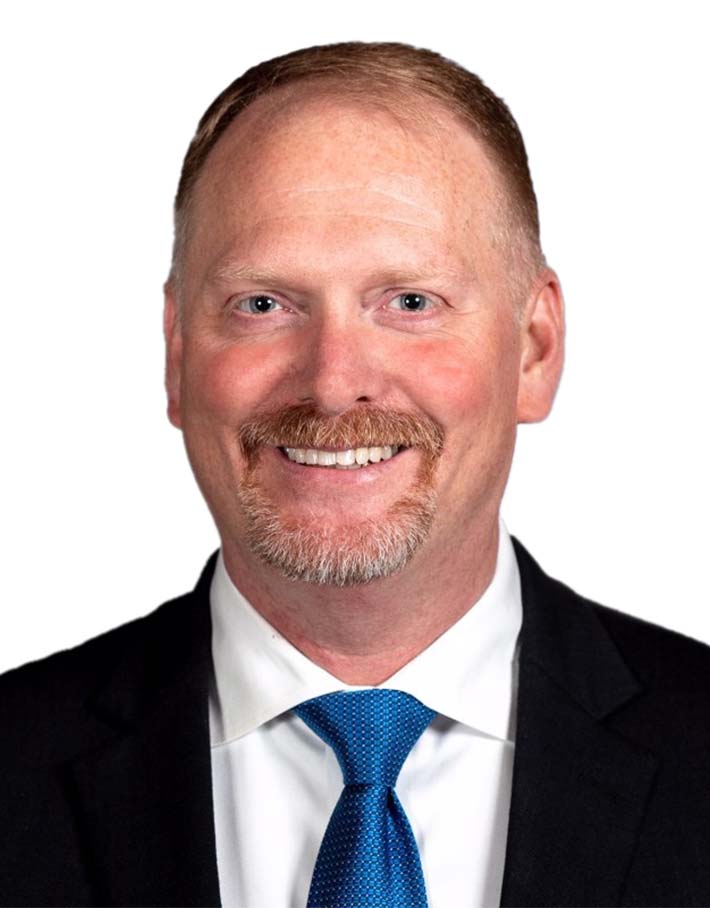How to Successfully Manage Regulatory Remediation
By Ed Wegener, Tim Buckler and Paul Saroj
Subscribe to our original industry insights
When regulatory remediation is required and your firm is working under consent orders, it is important for financial services firms to have a plan to efficiently execute the process to avoid excess disruption, manage risk and reputational damage, and to navigate the firm’s continuing relationship with the regulators. In today’s podcast, Oyster Consultant Tim Buckler and Paul Saroj, SVP of Regulatory Enforcement Remediation at Simpluris, talk about the remediation process, from data crunching to mailing the checks.
You can learn more about the events leading up to the remediation process by listening to our previous podcast Dispute Resolution – Managing Customer Complaints & Regulatory Inquiries. Our experts discuss the process of compliant investigations and working through the litigation process, including litigation support and expert testimony.
Oyster Consulting often works with firms or outside counsel to define, design, implement and manage remediations that limit the cost and reputational damage of an enforcement action. Our professionals will help you craft regulatory responses, assist with remediation or sit at the table with you.
Transcript
Transcript provided by TEMI
Bob Mooney: Welcome to the Oyster Stew Podcast. I’m Bob Mooney, general Counsel for Oyster Consulting. In our previous podcast, Dispute Resolution – Managing Customer Complaints and Regulatory Inquiries, we discussed the process of complaint investigations and working through the litigation process, including litigation support and expert testimony. In today’s podcast, Oyster’s Tim Butler and Paul Saroj, Senior Vice President of Regulatory Enforcement Remediation at Simpluris talk about remediation, what’s involved and how it’s done. Let’s get started with our host, Ed Wegner. Ed?
Ed Wegener: Thanks, Bob, and hello everyone. I am Ed Wegner, head of Governance Risk and Compliance for Oyster Consulting. I want to welcome you to our second podcast in our series on the dispute resolution process. In our earlier podcast, we discussed the process of investigating disputes and working through the litigation process, including litigation support and expert testimony. Today we want to talk about the process that needs to take place once it’s been determined that remediation is due to parties. I am very fortunate to have with me today two individuals that help clients through this challenging process. Tim Butler is an Associate Director in our Strategic Planning and Execution practice, and Paul Saroj is a Senior Vice President of regulatory enforcement and remediation at Simpluris. So, Paul, why don’t we start with you. Can you provide us with a little background about yourself and Simpluris and the role that Simpluris plays regarding regulatory enforcement and remediation?
Paul Saroj: Sure. Thank you for having me. I sincerely appreciate it. As Ed had mentioned on the SVP of Regulatory Enforcement and remediation at Simpluris, you know, prior to this, I worked for years at HSBC and was involved in a lot of the heavier enforcement remediation items that came out of the financial crisis from the OCC Federal Reserve, CFPB, consent orders and various state AG enforcement matters, where I often used a third party administrator similar to Simpluris. I also worked with several external remediation law firms. Many of them supported me during those consent orders and some of the consulting firms as well on some private large-scale remediation matters in the financial services and private equity space. My firm, Simpluris, we are, as I mentioned, a neutral third party administrator. We handle a lot of regulatory remediation and, and federal and state enforcement actions that we’re going to be discussing today.
We also do a lot of class action work, mass arbitration work. Overall, I would say the scope of, of what we do, we ingest a lot of data. We do the notifications out to the affected claimants or investors. We create the fair funds or qualified settlement funds on the half of the respondent, and then we ultimately deliver those funds back to those claimants or investors handle all the regulatory reporting that will come along with that, or anything that needs to go to the courts, any declarations. But we’ll evidence and memorialize all the efforts to get funds back to individuals with the key dates, with the key amounts, and make sure that we adhere to the milestones for the appropriate closure, whether it’s a US District court item, state court item in what we’re talking about today, it’s most often with the SEC commission or FINRA.
Ed Wegener: Well, thanks for that, Paul. That’s very helpful. And you know that work starts after you’ve determined who the affected parties are and the amount that needs to be paid back to those parties. And Tim, that’s really where your work has been focused, in this area. So, I wonder if you could, first of all, introduce yourself and, and your role here at Oyster, but then also talk about the process that you go through to make sure that regulators are comfortable with the methodology that’s used in order to determine the, the who gets paid and how much.
Tim Buckler: Yeah, thanks, Ed. I’m Tim Butler. I am the principal data guru at Oyster. So ,I do all the data analysis, methodology calculations, and any sort of data, fixing that needs to get done. Oyster works with the firm to determine the potential pathways that may have harmed a client, and we need to review the data and try to match those two up. So, we try to see what, where the data is available and what that leads to for potential methodology approaches. Sometimes we have great data that gives us several options. You know, if we have data, daily trading data and position values, sometimes there are gaps where you only have quarterly holdings or maybe there’s missing pricing information. So we work with the firm to help resolve any missing data or any gaps in data that need to be resolved.
Sometimes that involves going back to the clearing firm or custodian or carrier to get more data. Sometimes you even have to buy it from data broker to make sure you get all those gaps filled. So, if you can’t even fill all the gaps, sometimes you may even have to interpolate data or some sort of growth rate to make sure you have the best data you can to get the clients as close as possible. So once we have the data well understood, then we work with the clerk, the firm to determine which approaches are viable and which are the best, and make sure that they’re most comfortable with the way we’re going to go forward. Once we have our preferred analysis, then we work on documenting that and noting any major assumptions that the regulators need to be aware of. Since regulators are not well known for their quick turnaround time, we try to get as much information as possible into that initial documentation so that they’re more comfortable earlier in the process. Sometimes they come back with clarifications or request a sample analysis, or they may even ask for a meeting for us to walk them through the methodology. But the best outcome is the not unacceptable, which gives us the green. I would like to move forward.
Ed Wegener: And by providing that information to them upfront, the fewer questions you probably have when they do reach out, I’m sure.
Tim Buckler: Absolutely.
Ed Wegener: So Tim, how does Oyster help firms calculate the amount that is ultimately going to be owed and get the firm ready to help facilitate payment?
Tim Buckler: Once the methodology’s been proved, we build out our analysis database where we’ll calculate the base amount owed at the security or account level. Then we’ll add on the interest and roll everything up to the client level so we can figure out how much each client is owed. We’ll walk through the process with the firm to make sure they understand how we did our calculations and that everything meets their expectations. Once we think that everything looks good to go, we’ll make a client payment file with the final remediation total on that file. There’s going to be a mix of current and former clients. Sometimes we filter out the current clients, so the firm can credit their accounts through the clearing firm or custodian, sometimes the firm wants to pay their clients, the current clients by check. And the former clients are going to be paid by check. We’ll help draft a letter that informs all the clients about why they’re getting this credit to their account, or the check. And, in the end, we’ll have this list of clients that own the letter and or a letter and a check, which is when we’ll turn it over to a partner like Simpluris to facilitate mailing and check payment.
Ed Wegener: Well that’s really helpful. And Paul, once that’s been determined, can you talk a little bit about what Simpluris is engaged for sure. And once the amounts have been identified and how you work with clients to address those.
Paul Saroj: Sure. And I want to make clear, you know, some of the neutrality here. We are really engaged for getting those funds back, the disgorgement, pre-judgment interest, the penalty and all the activities typically outlined in an order. Whereas Tim might perform those calculations upfront in the pre-litigation and supporting those activities to negotiate the settlement. There’s also a, an involvement in the backend, but I’ll cover it on, on two different scenarios. One for formal enforcement matters, and then the second for voluntary remediations. So for formal enforcement matters, there’s typically some type of fund creation and SEC administrative proceeding as an example. It’s creating a fair fund where there’s typically like a 10-day period of where the funds need to be evidenced and with it him banked and segregated.
So, we’ll create that fair fund, apply for the EIN, and then set up the banking component for, for that settlement. Then we go into notifying all investors of the settlement order. So, we provide them a copy of the order. You know, there also might be a population of non-affected parties that we would still have to notice and make aware just so they can satisfy some of the obligations or a summary of material changes. For the A DV, we’ll handle all the mailings, all the undeliverable handling, anything that gets returned, we’ll skip trace to find a better address. And again, memorialize all those attempts, we’ll establish a call center typically, so, you know, for customer inquiries on the notification piece. Then when we later move to the distribution as well, and then kind of an email portal where they can inquire to us and we’ll handle, you know, all of those inquiries.
We’ll handle all the reissues of checks when we eventually distribute or even custodian credits that may come about in the return of funds to investors. We handle all of the tax reporting that would happen in these cases. And I I’m saying we, but any third-party administrator would probably do the same thing. So sorry for using that interchangeably, but handling all the tax reporting there are some unique tax obligations for the fair fund itself as well as for the claimants or investors in these cases that might not be in the normal course of business of like a 1099R. We handle all the beneficiary matters on deceased individuals. And so, if Mary Smith had four children that needed, was deceased and needed the checks broken out between the four, we would handle all of that. We would prepare ultimately is the final accounting that needs to go to the SEC or FINRA that memorialize all of those activities.
Paul Saroj: And that will include all the evidentiary exhibits of check cashings, the, the dates, the mail attempts, the beneficiary requests, some other items, you know, the funding of the fair fund, and ultimately a client attestation, if you’re familiar with the administrative proceedings or even a FINRA enforcement matter, you know, there’s a lot of heavy, heavy work oftentimes for multiple years going into it that is either done by Oyster supporting the negotiations, defense counsel and the client themselves. We are really inserted at the end of that to make sure that everything gets out, out the door and have a lot of experience with the cadence of reporting, the interim kind of meetings that we’ll have throughout the process with the regulators and getting that evidentiary package over. But we kind of take over after the settlement has been reached. The other part of it is voluntary remediations.
There might be a few different channels that those come about. One self-identified issues by the client themselves. There might be other items that an ongoing compliance monitoring or a special project through Oyster or some other consulting firm may be performing, or there might be an examination from FINRA or the SEC that identified some 12(b)-1 disclosure issues or 529 Class C share issues or cautionary action letters. We’ll get involved in those as well. And of the services that I mentioned before, we’re able to shortcut a few of those to abbreviate them. The important thing on these is that the client needs, wants to put their best foot forward and make those voluntary remediations back to those customers and you know, Oyster or Simpluris or another third party administrator are often engaged to similarly find the amounts that need to go back and then deliver those funds back to those investors.
Ed Wegener: No, that’s great. And you know, one of the things you mentioned in the remediation work that you do when a regulator is involved is the evidentiary package and the final accounting that you do. And I’m sure that one of the things that is most important to the credibility of a firm like Simpluris, and you know, probably one of the more challenging things is to make sure that the return rate that you’re able to achieve is high. And so maybe just if you could talk just really briefly about making sure that return rate is high and, and what’s your experience been in the work that you do in terms of the percentage of funds you’re able to get back to the parties.
Paul Saroj: Sure. I think for both FINRA and the SEC, we aim for at least a 95% goal. Our averages have exceeded those. There’s a few challenges that are inherent to every case. One is this may have been litigated or negotiated for 3, 4, 5, 6 years. There’s a long lookback period of the allegations also dealing, especially in the broker-dealer/RIA space, there’s a lot of elderly deceased individuals, which can become challenging. So, we make the attempt to get those funds back in an SEC case. It’s typically written in as 120 days or 150 days from once we initiate the checks that we need to report. But we will actively and proactively monitor the fund liquidation rates as well as the claimants reached, or investors reached rates at various periods, starting at day 45 to see if we’re benchmarking against prior cases.
Are we at 74% of fund liquidation rate when we think we should be at about 82 to get to that 95 mark? There will be a lot of conversations with the client defense counsel, as well as the regulators that we’ll interface with to ask for either extensions or potentially do outbound outreach to these customers to encourage check caching in various channels by print and mail, email notifications, calling, working with the broker network to encourage those check cashings. But ultimately, you know, helping support, and the regulators have been very flexible with it. Clients are understanding it as well, getting it to the appropriate threshold for enforcement to administratively agree and move it to closure. And then there’s another secondary part of it that would go to, and the SEC as an example, is the office of distributions that would need to bless those rates as well before administratively closing it out.
Ed Wegener: No, that, that’s great. And it sounds like a very complicated and challenging process that firms need to go through in, in doing this. And I wonder if you could talk about what you think are the primary benefits of engaging a third party like Simpluris to help firms out with these types of challenges?
Paul Saroj: Sure. You know, we have a lot of experience with it. We’ve done multiple of these and we have several going on at any given time, large scale, your regular broker-dealer, RIA or investment firm, you know, they might have unique capabilities in a print and mail facility. As an example, another department that may be able to cut checks, but not knowing the recipe to get this over with the regulators, it’s not something that they originally planned for. It was for more of their day-to-day workflow. And that goes also with capacity and, and staffing. We have dedicated teams and most other third party administrators also do that regularly deal with these issues as an organization for, a broker-dealer may not have the capacity to do that as well. A couple important things also. This is often a one-time event, which it’s hard to plan for, for the client, but it’s also not much room for error with the CCO liability and a variety of other things.
Headline risk, reputational risk. So, hiring a qualified third party administrator can help facilitate that, someone with experience in getting these things similar matters over the fence from a variety of areas. You know, one neutrality, as I mentioned, we’re kind of impartial to the remediation process. We interface a lot with the regulators directly throughout the engagement as well as the client, guide them through in defense counsel. And, you know, we just have that subject matter expertise. We’re well versed in kind of that recipe to get these things over the fence, the evidentiary package that’ll need to be created, the thresholds and return rates, and oftentimes have the relationships through prior matters with the same enforcement staff or office of distributions for the regulatory bodies. Reducing some of the risk exposure is also an important one. There’s a variety of risks that come out of a settlement, not just the financial implications, but a lot of headline risk and legal as well.
Paul Saroj: But helping mitigate those by, you know, working close with a consulting company like Oyster that’s doing the calculations to really narrow down the population of unique folks that will be receiving the notice and not go as broad, you know, to the non-affected folks helps kind of steer off some of that headline and risk exposure. We also do some things, you know, in the financial side of it, establishing that EIN for a formal qualified settlement fund where it’s a separate own legal entity that will help, you know, it have its own tax obligations. It’ll have its own financial consequences, but it’s separate from the investment firm or broker-dealer and won’t come back to bite them. And we’ll handle all the tax reporting on those having the established regulatory reporting to memorialize everything, as I mentioned before, those mail attempts, the check cashing dates, the timeline adherence for all those matters. It’s something that a client typically doesn’t have in place and is not seen. So I think that’s very helpful. And then we typically take over the driver’s seat post settlement, and as it becomes public in all those interactions with, we’ll do it on behalf and kind of by be the liaison for defense counsel as well as the client, with the regulator, which helps save some of that legal expense as well.
Ed Wegener: Yeah. And like you had mentioned that firms weren’t planning for this, so having somebody that can come in allow the firm to continue doing their normal day-to-day business operations, while making sure that this gets done and making sure that they’re comfortable that this is getting done in an efficient, cost effective, and in a manner that will satisfy the regulators is really important. And paying back the parties is just as important, but just one part of wrapping up these types of issues. Oftentimes regulators will look to firms after an event like this and have them reevaluate their supervisory systems, either informally or formally as part of an independent consultant undertaking in the order. And Tim, that’s something that we at Oyster help clients with, both generally looking at policies and procedures and making sure that they’re reasonably designed, but especially in a case like this. Can you talk a little bit about, you know, how Oyster and firms like Oyster help firms out, after an event like this in assessing their supervisory systems?
Tim Buckler: Oyster has industry experts and formula regulators on our staff. We are also the CCO or compliance support for many broker-dealers and RIA firms today. So, we have a strong understanding of the regulatory requirements. We are also able to compare the firm’s policies and procedures against what we’ve seen at other firms in the industry, determine best practices. We review the impacted policies, procedures, all that in mind to find any gaps that need to be addressed. And then we work with the firm to make sure they understand the regulations, how they’re positioned against their peers, and how they should be handled in the documentation. And then we can draft updates to the policies and procedures so that the firms are compliant going forward.
Ed Wegener: And that’s important. And along all of these, and we’ve talked about this throughout the discussion today, is making sure that we’re meeting the regulatory requirements so that the client is meeting the regulator’s requirements. A lot of that is making sure that we’re hitting the timeframes that they have put in place, because I know typically, in doing any type of remediation, they’re going to want those done at specific timeframes and put in certain milestones and making sure that the regulators are kept up to date on how that’s going, is really important because at the end of the day, what the firm wants to see is that this is put behind them and that they can move on. And what the regulators want to see is that the parties involved receive the remuneration that they believe is required, but then also that they have a comfort level that going forward, the firm will be able to compliant, has a reasonable compliance system put in place to address these issues on a going forward basis.
Ed Wegener: Once all of this is done, hopefully both for the clients, for the regulators, this is an issue that’s behind them. I really appreciate both of you joining us today and sharing your perspectives. This is a very tricky process that firms have to go through. It’s an unfortunate process when these things do happen, but having trusted partners to work with to make sure that this goes as smoothly as possible is extremely important. So your perspectives, the work that you guys do is very important to our clients. Thank you very much.
Bob Mooney: Thanks everyone for listening. If you’d like to learn more about our experts and how Oyster can help your firm, visit our website at Oysterllc.com. If you like what you heard today, follow us on whatever platform you listen to and give us a review, reviews, make it easier for people to find us. Have a great day.





